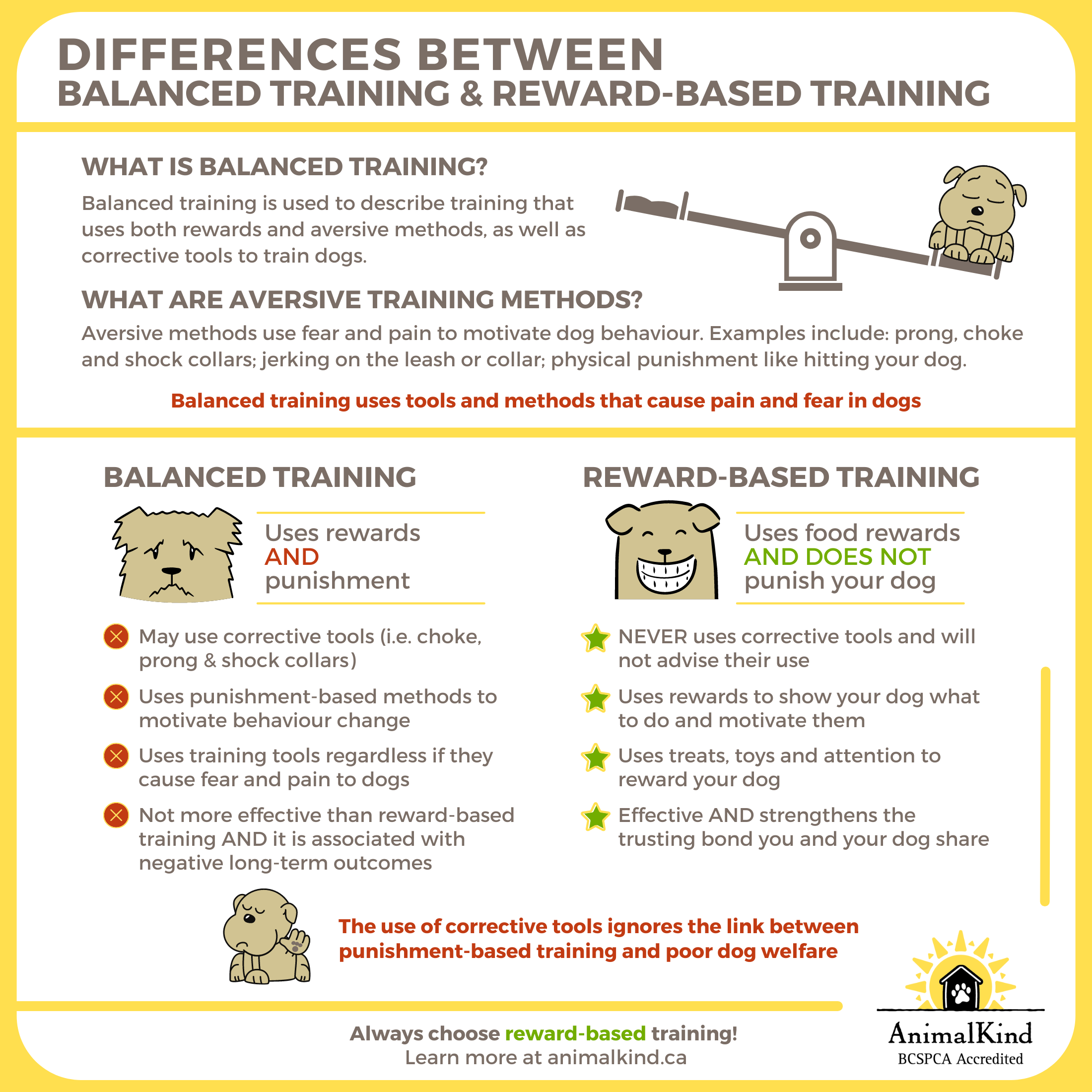Differences between balanced training and reward-based training
Have you heard the term balanced training? What does balanced training mean for dogs? We have the answers!
Balanced training uses both rewards and aversive methods to train dogs. That means that balanced training uses corrective tools and methods that cause pain and fear in dogs.
The term might sound appealing, but when it comes to dog training, the use of corrective tools ignores the link between punishment-based training and poor dog welfare.
Dog training terminology can be confusing, so we created an infographic to help you identify the differences between balanced training and reward-based training, so you can be sure you are selecting a humane trainer. Download it (PDF) and share it with your dog-loving friends!

Is balanced dog training effective?
Balanced training is not more effective than reward-based training.
So why choose balanced training that uses tools and methods that cause fear and pain in dogs when science-based humane training is available?
Reward-based training helps build a bond of trust between you and your dog and strengthens that bond.
We spoke to Carol Millman, owner and trainer at Wag the Dog, to help explain why effective dog training is reward-based, not balanced.
Get information that's good for your dog!
Subscribe to AnimalKind to receive news and updates about dog training in B.C.
The BC SPCA processes your personal information to provide you with the products and services you have requested as well as for advertising and analytics purposes. More information on uses and how you can opt out may be found in our privacy policy.